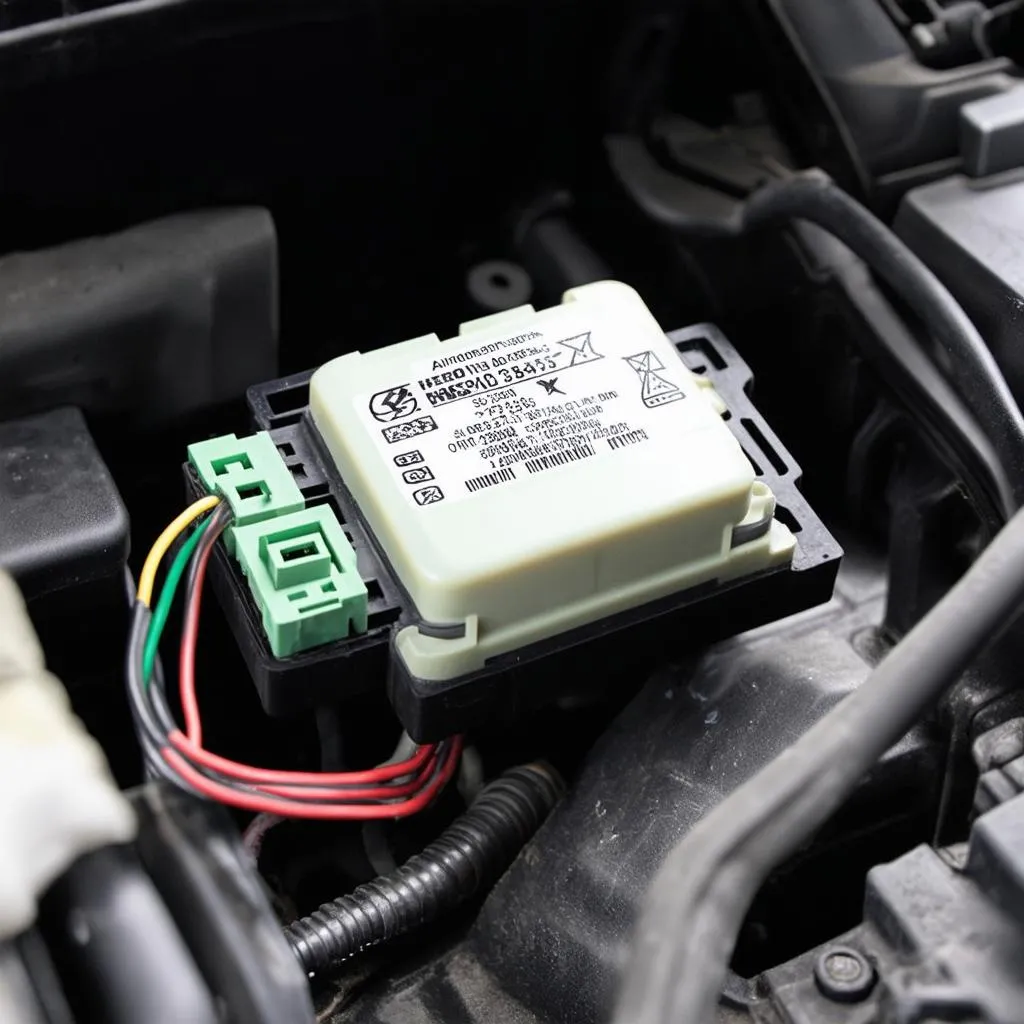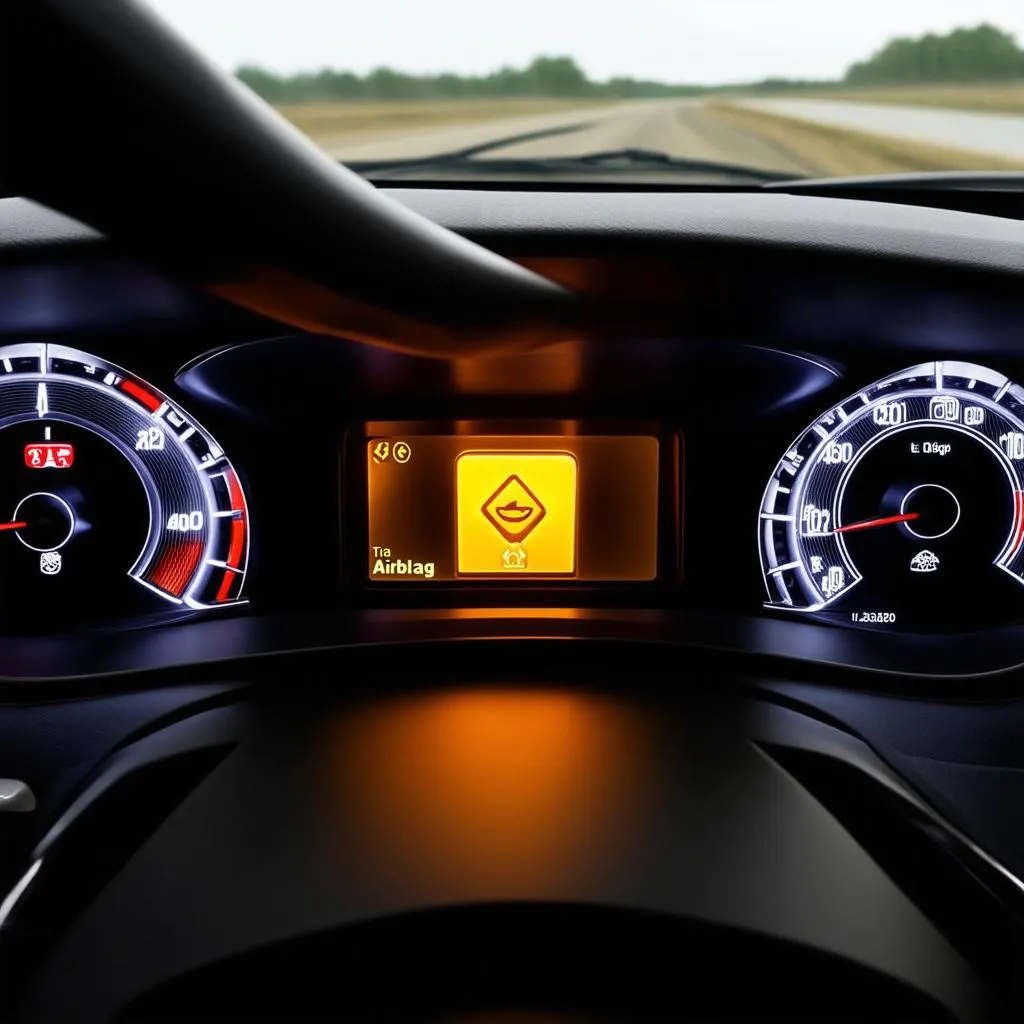Imagine this: You’re cruising down the Pacific Coast Highway, California, the sun is shining, and your favorite song is playing on the radio. Life is good, right? But suddenly, a yellow light on your dashboard decides to join the party – the dreaded airbag light. Don’t panic, it’s not the end of the world (or your car). This article will delve into the common reasons why your airbag light might be illuminated and what you can do about it.
Decoding the Airbag Light: What Does it Mean?
Whether you’re a seasoned mechanic or a casual car enthusiast, seeing a warning light on your dashboard can be unsettling. The airbag light, in particular, signifies a potential issue with your car’s Supplemental Restraint System (SRS), which is designed to protect you and your passengers in the event of a collision.
From a mechanic’s perspective, the airbag light is like a distress signal from your car’s safety system. It’s crucial not to ignore it as it could mean the difference between walking away unscathed from an accident or facing more serious consequences.
Technically speaking, the airbag light is triggered by the SRS control module, which continuously monitors various components like sensors, wiring, and the airbags themselves. Any fault within this intricate system can trigger the light.
Ignoring a persistent airbag light can also have economic implications. A minor issue, if left unaddressed, could snowball into a costly repair down the line. Regular car maintenance, including addressing warning lights promptly, can save you a lot of money in the long run.
Common Culprits Behind a Glowing Airbag Light
So, why is your airbag light on? Let’s explore some of the most common reasons:
1. Faulty Seat Belt Buckle or Sensor
Remember that time you crammed a week’s worth of groceries into your car after a trip to Walmart on 5th Avenue, New York City? Well, your car remembers too. A common culprit behind airbag light issues is a faulty seat belt buckle or sensor. Overloading the seat or even a stray coin lodged in the buckle mechanism can trigger the warning light.
2. Loose or Damaged Wiring
Just like frayed wires in your house can cause electrical problems, the same applies to your car. Vibrations and general wear and tear can loosen or damage the wiring within the airbag system, leading to malfunctions.
3. Depleted Battery or Electrical Issues
Ever tried starting your car after leaving the headlights on overnight? Your battery probably wasn’t too happy. A weak or depleted battery can disrupt the delicate electrical balance in your car, including the airbag system.
4. Faulty Clockspring
No, we’re not talking about time travel. The clockspring is an electrical connector that allows your steering wheel to turn while maintaining a continuous electrical connection to the airbag and other components. A malfunctioning clockspring can interrupt this connection, triggering the airbag light.
5. Aftermarket Modifications
Installing aftermarket accessories, especially those that tamper with the steering wheel or seats, can interfere with the airbag system. It’s crucial to have any modifications done by qualified professionals who understand the intricacies of your car’s safety systems.
What to Do When Your Airbag Light Turns On
First and foremost, don’t panic. A glowing airbag light doesn’t necessarily mean your airbags are about to deploy spontaneously. However, it’s crucial to address the issue promptly.
Here are some steps you can take:
-
Check Your Surroundings: If the light came on while driving, safely pull over and check for any obvious issues, like loose objects interfering with seat belts.
-
Consult Your Owner’s Manual: Your car’s owner’s manual is a treasure trove of information, including specific troubleshooting tips for warning lights.
-
Use an OBD-II Scanner: An OBD-II scanner, like the Autel 301, can read diagnostic trouble codes from your car’s computer, providing more specific information about the airbag system fault. You can learn more about these scanners in our article on OBD-II Scanner for ABS and SRS Systems.
-
Seek Professional Help: If the issue persists or you’re unable to diagnose it yourself, it’s best to consult a qualified mechanic specializing in airbag systems.
 Airbag Control Module
Airbag Control Module
Airbag Light FAQs: Addressing Common Concerns
Here are some frequently asked questions about airbag lights:
-
Can I drive my car with the airbag light on?
While you might be able to drive for a short distance, it’s not advisable. The illuminated light indicates a potential safety risk, and driving with a compromised airbag system could have serious consequences in an accident.
-
Will disconnecting the battery reset the airbag light?
Disconnecting the battery might temporarily reset the light in some cases, but it won’t address the underlying issue. It’s best to diagnose and fix the root cause.
-
How much does it cost to fix an airbag light issue?
The cost can vary greatly depending on the cause. A simple fix like replacing a faulty seat belt buckle sensor could cost around $100-$200, while more complex issues requiring module replacement could run into thousands of dollars.
Similar Questions You Might Have:
- How do I know if my airbags are expired?
- Can I replace an airbag myself?
- What should I do after an airbag deploys?
 Car Dashboard with Airbag Light On
Car Dashboard with Airbag Light On
Need Help with Your Car’s Diagnostics? We’re Here for You!
Understanding your car’s warning lights and addressing them promptly is crucial for your safety and the longevity of your vehicle. If you’re facing issues with your airbag light or any other diagnostic trouble codes, don’t hesitate to reach out. Our team of automotive experts is available 24/7 to assist you with software installations for diagnostic tools and provide guidance on resolving those pesky warning lights. Contact us on Whatsapp at +84767531508 for prompt and reliable support.
Remember, a stitch in time saves nine, and that applies to your car’s safety as well!